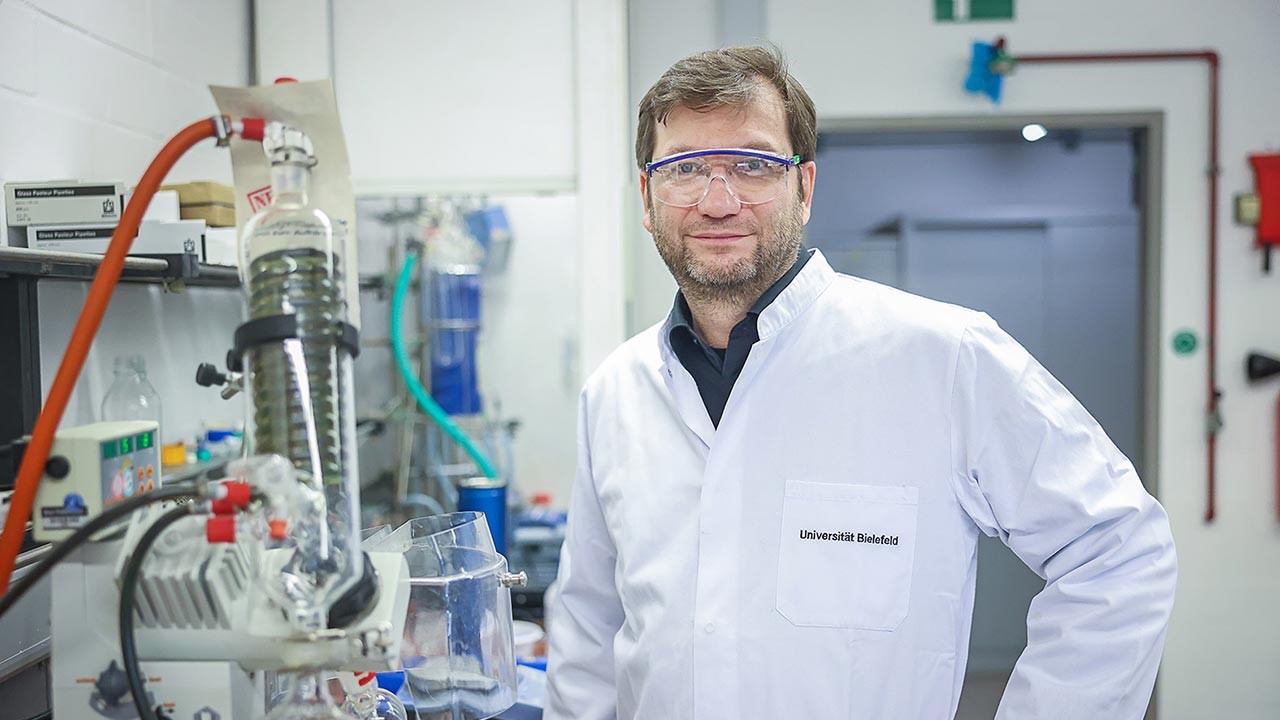Catalysts modeled on nature
A research alliance is developing iron-containing molecules that will save energy and raw materials in important chemical processes.

Nature is once again the model: Many chemical reactions require a lot of energy to take place quickly or even at all. Living cells have solved this by enzymes that act as catalysts for the reactions. Often, these enzymes carry metal ions in their reactive center. A new research alliance now wants to mimic this principle in order to reduce the need for energy and raw materials for important chemical reactions. The project, called BioOxCat, is funded by the German Research Foundation with 3.3 million euros for four years. Several universities and Max Planck Institutes under the leadership of Bielefeld University are involved
Mimic catalysis of iron enzymes
"Every process in industry should be run as catalytically as possible," says project spokesman Thorsten Glaser from Bielefeld University. The problem, however, he says, is that so far there are not enough good catalysts for all processes. "Especially for difficult reactions, industry has not yet found catalysts that work efficiently enough." Nature always uses enzymes with metals, so-called metalloenzymes, for complex reactions, he said. Especially often, the metal is iron, he said. "That's why we mimic the catalysis of iron enzymes in our research," says Glaser, explaining the research approach. In this way, process energy is to be saved and the use of fossil raw materials reduced. "Instead, we need these limited raw materials for the production of pharmaceuticals, building materials or plastics," finds the project leader. "With the results of our research group, we would like to establish energy-saving processes for the chemical industry to support the production of basic materials."
Previous approaches fall short of nature
The researchers have already tested initial approaches, but the functionality of the catalysts developed so far falls far short of that of the natural models. Glaser suspects, "This is partly because the molecules are still too simple in structure, but I'm sure the interdisciplinary research group will get to the bottom of the details." At the end of the research period, he adds, they also want to be to the point where the processes associated with the enzymes are simple enough to be suitable for industry.
Production of methanol, pharmaceuticals and more
The project participants have several specific applications in mind. Among other things, they want to mimic methane monooxygenase, an enzyme that drives the reaction of methane and oxygen to form methanol. Another goal is to mimic certain enzymes that react with sulfur - an application that is of particular interest to the pharmaceutical industry. Officially, funded research on these and other targets will begin in July 2022.
bl


